Top Influential Engineers Today

When you think about the types of jobs that will remain vital in the next century, engineers have to be near the top of the list. Engineers are the people who understand how everything works around us. They understand the combustion in your car engine, the proper approach and trajectory to land an orbiter on the moon, and how to program computers both inside and outside of our bodies to tell us what time it is, play us music, and help us live longer, more connected lives.
Engineering is much more than just building bridges and skyscrapers. Engineers are an integral part of the development of medical technologies such as devices insertable through small incisions, building suits to protect astronauts from solar radiation, and designing software to diagnose malignancy in AI-read scans. If you were to look around you right now, you will see electronics, furniture, lighting, flooring, and construction materials...all the product of engineering work.
Among the influential engineers on this list we have biomedical engineers who have saved patient lives with better medical technology and drug delivery systems, an engineer who worked to develop more cost-effective solar energy capture and storage techniques and engineers who are committed to developing low-energy, sustainable solutions for today’s society. The technology that allows you to take such sharp photos with your digital camera? A visual engineer developed the means to shrink pixels and deliver much better photographic results. As you’ll notice, the field of engineering is vast and includes everything from the study of architecture and design to the development of neural interfaces to the interdisciplinary connection with biology and the study of jellyfish to improve the field of fluid mechanics.
Interested in majoring in engineering? We have an in-depth look at some of the most in-demand careers for engineers in our Student’s Guide to Engineering.
In what follows, we look at influential engineers over the last decade. Based on our ranking methodology, these individuals have significantly impacted the academic discipline of engineering within 2010-2020. Influence can be produced in a variety of ways. Some have had revolutionary ideas, some may have climbed by popularity, but academics all. Read more about our methodology.
Note: This isn’t simply a list of the most influential engineers alive today. Here we are focused on the number of citations and web presence of scholars in the last 10 years. There are other highly influential scholars who simply haven’t been cited and talked about as much in the last 10 years, whereas some new faces have been making a splash in the news, speaking events, and publishing, publishing, publishing. Our AI is time sensitive. To find some of the big names you might have expected to see here, we encourage you to use our dynamic ranking system and check influence over the past 20 and 50 years.
Top Influential Engineers
2010-2020
Want more? Discover influential engineers throughout history: Of All Time | Last 50 Years | Last 20 Years | Black Engineers | Women Engineers
1.Bin He
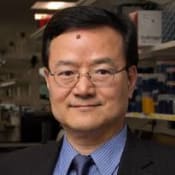
(1957 - )
Wenzhou, China
Areas of Specialization: Neuroengineering, Biomedical Imaging
Bin He is a biomedical engineering scientist, head of the Department of Biomedical Engineering at Carnegie Mellon University and Editor-in-Chief of the IEEE Transactions on Biomedical Engineering. He earned his B.S. in electrical engineering from Zhejiang University in Hangzhou, China. He then earned an M.S. in electrical engineering and a Ph.D in bioelectrical engineering from the . He then went on to conduct his postdoctoral study at Harvard-MIT’s Division of Health Sciences and Technology.
He’s field of expertise is mapping the brain-computer interface through EEG, MRI, and other imaging techniques. His research has yielded significant findings through the use of functional neuroimaging, electrophysiological source imaging, neuromodulation, and tissue electrical property imaging. He has developed the ability for a remote-controlled model helicopter to be controlled by the use of EEG sensors placed on the skin. In addition to his remarkable research in neuroscience and engineering, He has also held a number of influential leadership roles, leading the Biomedical Functional Imaging and Neuroengineering Laboratory located at Carnegie Mellon University.
He is the editor of Neural Engineering and a fellow of the IEEE, American Institute for Medical & Biological Engineering, the Institute of Physics, and the International Academy of Medical & Biological Engineering.
2.L. Rafael Reif
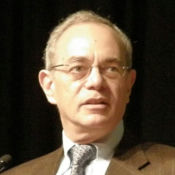
(1950 - )
Maracaibo, Venezuela
Areas of Specialization: Electrical Engineering
Leo Rafael Reif is the current president of the Massachusetts Institute of Technology and an electrical engineer. He studied electrical engineering at the University of Carabobo before earning a doctorate in electrical engineering from Stanford University.
While teaching at MIT, he conducted research on the development of microelectronics fabrication methods that reduced economic impacts and 3D integrated circuit technologies. He is a pioneer in the field of micro and nanotechnologies and holds or shares more than a dozen patents.
After years of teaching, he became provost at MIT. In this new role, he led the institution’s foray into online learning, developing massive open online courses (MOOCS). His work eventually led to edX, a collaborative effort between MIT and Harvard University that has had 24 million unique students take free online courses. His work on MIT’s online courses earned him a Tribeca Disruptive Innovation Award, and he has been named among the most influential individuals of Hispanic heritage working in the technology field.
He also created MIT’s Stephen A. Schwarzman College of Computing, which is a research environment that studies artificial intelligence through an ethical and philosophical lens. He is a fellow of the Institute for Electrical and Electronic Engineers and a member of the Electrochemical Society.
3.Robert Samuel Langer, Jr.

(1948 - )
Albany, New York, USA
Areas of Specialization: Chemical Engineering, Biomaterials, Tissue engineering
Robert Samuel Langer, Jr. is one of the twelve Institute Professors at the Massachusetts Institute of Technology, a chemical engineer, and an inventor/entrepreneur. In addition, he holds faculty roles at the David H. Koch Institute for Integrative Cancer Research and the Harvard-MIT Division of Health Services and Technology. He earned a bachelor’s degree in chemical engineering from Cornell University and a Sc.D in chemical engineering from the Massachusetts Institute of Technology.
Langer has made significant contributions to biotechnology and medicine. For example, he has developed new technologies for transdermal drug delivery, angiogenesis inhibitor to prevent tumor growth, and a chip technology for delivering chemotherapy.
At the age of 43, Langer became the youngest person ever to have been selected to the National Academy of Engineering, the Institute of Medicine, and the National Academy of Sciences. He has received numerous prestigious awards, including the United States Medal of Technology and Innovation, the National Medal of Science, the Warren Alpert Foundation Prize, the Queen Elizabeth Prize for Engineering, and the Kyoto Prize.
Langer has been involved in the founding of numerous biotech and med-tech companies, including Semprus Biosciences, Frequency Therapeutics, Tarveda Therapeutics, Microchips Biotech, and many more. He holds over 1,300 patents for biotechnologies.
4.Karen Bausman

(1958 - )
Allentown, Pennsylvania, USA
Areas of Specialization: Architecture
The only American woman to hold both distinguished design chairs, Karen Bausman has held the Eero Saarinen Chair at Yale University’s School of Architecture and the Eliot Noyes Chair at the Graduate School of Design at Harvard University. She is also currently Adjunct Associate Professor at Pratt Institute and principal of Karen Bausman & Associates, and a Fellow of the American Academy in Rome. She earned a professional degree in architecture from the Cooper Union for the Advancement of Science and Art, which later awarded her their President’s Citation for Outstanding Contributions to the field of Architecture.
Bausman is a former faculty member from Columbia University’s School of Architecture’s Advanced Architectural Design Studio, which was instrumental in the development of cutting edge techniques in digital visualization, composition and materials. With a keen interest in the use of biological or natural structures, she has designed such compelling structures as the Hamlin Chapel and Library and Flower Tower.
She was awarded the Rome Prize by the American Academy in 1994 and the Progressive Architecture Award for Design Excellence in 1998. In 2005, she was profiled in The New York Times after winning a multiyear contract to bring new vision to architectural design efforts throughout New York City. She provided commentary for the Emmy-Award winning PBS television program, Secrets in the Sky: The Towers of Gotham.
5.Chris Toumazou

(1961 - )
United Kingdom
Areas of Specialization: Electronic Engineering, Medical Technology
Chris Toumazou is Chief Scientist of the Institute of Biomedical Engineering and Professor of Circuit Design at Imperial College London, Founder of Toumaz Holdings, Ltd., Chief Scientific Advisor to GENEU, Co-founder of DNAnudge, Executive chairman and Founder of DNA Electronics Ltd, and Imperial College London’s first Regius Professor of Engineering. He earned his undergraduate degree and doctorate from Oxford Brookes University. He went on to become a Research Fellow and then, the youngest professor at Imperial College.
He has been active in the development of new mobile phone technologies and the use of silicon technology for diagnosis and management of chronic diseases. He invented Portable and Rapid Semiconductor Genome Sequencing and ion semiconductor sequencing. A prolific writer and entrepreneur, he has published over 500 research papers and owns 50 patents.
He was recognized by the Queen of England on the occasion of her 60th anniversary celebrations, with a Regius professorship, a marker of exceptional achievement. In 2013, he was awarded the Gabor Medal from the Royal Society. He is an Elected Fellow of The Royal Society, the Academy of Medical Sciences, the Royal Academy of Engineering, the Institution of Electrical Engineers and Academia Europaea. In 2020, he was a co-winner of the Entrepreneur of the Year Award, from the UK BioIndustry Association.
6.Dawn Bonfield
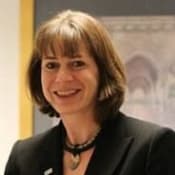
( - )
Areas of Specialization: Materials Engineering, Diversity/Inclusion in STEM
Dawn Bonfield currently holds the titles of Royal Academy of Engineering Visiting Professor of Inclusive Engineering at Aston University, as well as Director of Engineering Equality Diversity and Inclusion at Aston University. Bonfield is also a past president and chief executive of the Women’s Engineering Society.
With a background in materials engineering, Bonfield has previously worked at companies including British Aerospace, the Institute of Materials, Minerals and Mining, and the Atomic Energy Research Establishment (AERE), and has been plenty influential on those grounds alone. However, Dawn is widely known in engineering and beyond as an advocate of diversity and inclusion in STEM fields, where her greatest degree of influence lies.
A prominent woman in a field mostly filled with men, Bonfield has worked to open STEM careers to all. As the founder and director of Towards Vision, Bonfield has pushed for initiatives to balance the professional population in STEM with the global population. Toward this the organization, and Bonfield herself, disseminate research on the inclusion gap in STEM, as well as resources on how to fix it, including tools, events, and training workshops. Additionally, Bonfield manages the Magnificent Women project, celebrating the history of women in engineering, and is the UK representative on the World Federation of Engineering Organisations Women in Engineering Committee.
For her work, Bonfield has received numerous awards and honors, including a WISE award, an Association Congress Award from the International Women in Engineering Day campaign, and a SEMTA award for Diversity in Engineering.
7.John Perkins
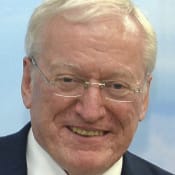
(1950 - )
Areas of Specialization: Process Systems Engineering
John Perkins is a retired engineering scientist, academic, and government adviser. He earned his B.S. in chemical engineering from Imperial College London, and his Ph.D studies took place at Imperial College, the Salters’ Institute of Industrial Chemistry, and the University of Cambridge.
An expert in process systems engineering, Perkins has served as Chief Scientific adviser for the U.K’s Department for Business, Innovation and Skills, Vice President and Dean of Engineering and Physical Sciences at the University of Manchester, President of the Institution for Chemical Engineers and Vice-President of the Royal Academy of Engineering. Process systems engineering refers to the use of natural forces such as temperature, light, heat, cold, and pressure to process natural resources into a form usable by society.
He has been a Fellow of the field’s most prestigious societies for many years. He is a Fellow of the Institution of Chemical Engineers, the Institute of Mathematics and its Application, the Royal Academy of Engineering, the City and Guilds of London Institute, the Royal Society of Arts, and most recently, the Institute of Engineering and Technology.
In 2007, he was appointed a Commander of the Order of the British Empire for his exemplary and meaningful contributions to the field and science of engineering.
8.Moshe Kam

(1950 - )
Areas of Specialization: Detection and Estimation, Data Fusion, Engineering Education
Moshe Kam is Dean of the Newark College of Engineering at the New Jersey Institute of Technology and an engineering educator. He earned a B.S. in electrical and electronics engineering from Tel Aviv University. After serving his mandatory military service obligation in Israel, he earned an M.S. and Ph.D. in electrical engineering from Drexel University.
His research work has focused on decision fusion and distributed detection, identifying computationally feasible fusion rules for multi-sensor systems. He is interested in robot navigation, data mining, detection and estimation. He served as the 49th President and CEO of the Institute for Electrical and Electronics Engineers in 2011, marking the height of his long-time service to the organization.
He has authored more than 150 scientific papers, the most heavily cited of which include “Decision Fusion and Supervisor Synthesis in Decentralized Discrete-Event Systems”, and “Neural Network Architectures for Control”. As a commentator on the state of play within the field of engineering, he has also penned essays such as “Why Won’t Jane go to Engineering School” and “What Should Be the First Professional Degree in Engineering”. He was instrumental in the creation of a 9500 sq. ft. Makerspace in New Jersey which offers access to cutting edge equipment for builders and creators.
9.Subra Suresh
(1950 - )
Areas of Specialization: Mechanical Engineering, Materials Science, Biomedical Engineering
Subra Suresh is a Distinguished University Professor and President of Singapore’s Nanyang Technological University, a biological engineer and materials scientist. He earned a B.Tech. degree from the IIT Madras in Chennai, a master’s degree in mechanical engineering from Iowa State University, and a Ph.D. in mechanical engineering from the Massachusetts Institute of Technology.
He completed his postdoctoral research work at the University of California, Berkeley before accepting a faculty position at Brown University. In 1985, he was awarded the National Science Foundation’s Presidential Young Investigator Award, and in 1982 he was awarded the Hardy Medal for his potential in metallurgy. His book, Fatigue of Materials, has been cited over 5,000 times.
He served as the Director of the National Science Foundation from 2010 to 2013. During his time with the NSF, he started many important initiatives, including the NSF Innovation Corps, Integrated NSF Support Promoting Interdisciplinary Research and Education, and Graduate Research Opportunities Worldwide. After his time with the NSF, Suresh became the president of Carnegie Mellon University, where he remained until 2017.
He provided unparalleled leadership during his tenure, sourcing hundreds of millions of dollars in contributions to help develop STEM programs for the school. Later, he became the President of NTU Singapore, where he is developing a “smart campus”.
10.Ravi V. Bellamkonda
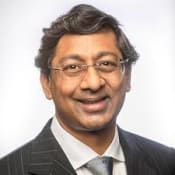
(1968 - )
Areas of Specialization: Biomedical engineering
Ravi V. Bellamkonda is the Vinik Dean of the Pratt School of Engineering and professor in the Department of Biomedical Engineering at Duke University. He earned a Bachelor of Engineering degree in biomedical engineering from Osmania University and a Ph.D. in medical science and biomaterials from Brown University.
Bellamkonda is a well-known biomedical engineer, who has focused on the use of biomaterials to repair spinal nerves, improve neural interfaces and therapeutically improve brain tumors. His laboratory is experimenting with the use of biomaterials in the nervous system to regenerate peripheral nerves, and interface brain electrodes. The BBC created a special report on his work titled, “Cancer: ‘Tumor Monorail’ Can Lead Cancers to Their Doom”.
He is the former president of the American Institute of Medical and Biological Engineering and former deputy director of research at the Georgia Tech/Emory Center for the Engineering of Living Tissues. He has been awarded a Clemson Award for Applied Research by the Society for Biomaterials and a Global Indus Technovator Award by the Massachusetts Institute of Technology. He is a fellow of the Institute of Physics and the American Institute for Medical and Biological Engineering. In 2015, he was a member of the CREATE-X executive team at Georgia Tech.
11.Rem Koolhaas

(1944 - )
Rotterdam, Netherlands
Areas of Specialization: Architectural Theory. Urbanist
Remment Koolhaas is Professor in Practice of Architecture and Urban Design at the Graduate School of Design at Harvard University, an architect, architectural theorist and urbanist. He is also the founding partner of the Office of Metropolitan Architecture (OMA) and AMO, his research and design studio. He studied architecture at the Architectural Association School of Architecture and Cornell University.
Considered to be one of the most innovative and influential architects of our time, Koolhaas is the author of Delirious New York: A Retroactive Manifesto for Manhattan and S, M, L, XL, which he wrote with Bruce Mau, Jennifer Sigler, and Hans Werlemann. He has been a proponent of the “Program”, which is an ethos that suggests that form follows function. Koolhaas worked to include surprising functional elements to his designs, such as when he attempted to add units for the homeless into the Seattle Central Library project.
With offices now in Rotterdam, New York and Beijing, Koolhaas is still actively engaged in urban design and architecture. His current projects include new buildings for the Central China Television Headquarters, public buildings in Qatar, a science center for HafenCity in Germany, and the Shenzhen Stock Exchange.
In 2000, Koolhaas was awarded the Pritzker Prize. He was honored with the Golden Lion of the Venice Biennale of Architecture for lifetime achievement in 2010, and in 2018, France honored him as Commander of the Ordre des Arts et des Lettres.
12.Mung Chiang

(1977 - )
Tianjin, China
Areas of Specialization: Electrical Engineering, Communication Networks
Mung Chiang is the Director of the Office of the Science and Technology Advisor to the Secretary of State, the John A. Edwardson Dean of the College of Engineering at Purdue University, a technology entrepreneur, foreign policy expert, and engineering educator. He earned B.S. degrees in mathematics and engineering, an M.S. in electrical engineering and a Ph.D. in electrical engineering from Stanford University.
He is well-known for his work on the Optimization of Networks, Smart Data Pricing and Network Utility Maximization. He holds at least 20 patents, and has invented technologies focused on e-learning, smart data pricing and the use of data for personalized learning.
He became Science and Technology Adviser at the U.S. State Department in 2019, becoming the first engineer to become the agency’s chief scientist and technologist. He has also grown the Purdue University Engineering program to become the largest program in the U.S.
He is co-founder of Smartiply, Zoomi, and DataMi, and is a founding board member of Open Fog Consortium, which has since merged with the Industrial Internet Consortium. In 2013, the National Science Foundation and the National Science Board awarded him the Alan T. Waterman Award, making him the first network engineer to receive the award.
13.Carver Mead

(1934 - )
Bakersfield, California, USA
Areas of Specialization: Electrical Engineering, Neuromorphic Engineering
Carver Mead is the Gordon and Betty Moore Professor Emeritus of Engineering and Applied Science at the California Institute of Technology. He earned a B.S., M.S., and Ph.D. in electrical engineering from California Institute of Technology, where he also taught for more than 40 years.
Mead has made substantial contributions in developing novel methods of applying physics to electronic devices. He has studied the energy behavior of electrons, applied the principles of electron tunneling and hot-electron transport to a three terminal solid-state device, and gained insights into the role of interface states in band-gap engineering.
He has also done research and development in neural models of computing, creating new fields of study: Neural Networks, Neuromorphic Engineering, and the Physics of Computation. He has co-founded companies in this field, including Synaptics, Inc. (which develops touch pads for computers), Sonic Innovations, Inc. (hearing aid chips), and Foveon, Inc. (silicon sensors for photographic imaging). He has founded more than 20 companies in all.
He has been recognized for his contributions with numerous awards, including the Dickson Prize in Science, the Lemelson-MIT Prize, Award for Outstanding Research from the International Neural Network Society, the National Medal of Technology, and the BBVA Foundation Frontiers of Knowledge Award of Information and Communication Technologies.
14.Ann Dowling
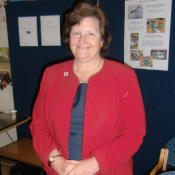
(1952 - )
United Kingdom
Areas of Specialization: Energy, Fluid Mechanics, Turbomachinery
Ann Dowling is a Deputy Vice-Chancellor and professor of mechanical engineering at the University of Cambridge. She studied at the University of Cambridge where she earned a Ph.D degree.
When she was nominated to be a Fellow of the Royal Society, they noted her expertise regarding combustion systems and jet engine instabilities that generate reheat buzz. She has provided research-informed, data-driven leadership for the oil company, BP, as well as in her role as president of the Royal Academy of Engineering. Her knowledge of aeroacoustics was the product of her dissertation research, which was conducted on the Concorde supersonic airliner’s sound problems.
Dowling has also studied the impacts of low-emission combustion and lower levels of highway noise, vibrations, and acoustic. She is a researcher for the Silent Aircraft Initiative, which aims to reduce airplane noise to levels undetectable outside of the airfields.
She was selected as a Commander of the Order of the British Empire in 2002, Dame Commander of the Order of the British Empire in 2007, and to the Order of Merit in 2016.
She has taught and researched at the University of Cambridge since the 1970s, but she has taken on visiting faculty roles at the California Institute of Technology and the Massachusetts Institute of Technology.
15.Bilal M. Ayyub

(1958 - )
Areas of Specialization: Resilience and Sustainability, Risk Analysis, Global Catastrophic Risks
Bilal M. Ayyub is the president of BMA Engineering, Inc. and director of the Center for Technology and Systems Management and professor of civil and environmental engineering at the University of Maryland, College Park. He earned a B.S. in civil engineering from Kuwait University, and an M.S. and Ph.D. in civil engineering from the Georgia Tech.
He has specialized in risk analysis, decision and policy making and uncertainty modeling. He is credited as author, co-author, editor or co-editor for more than 600 publications. Among these publications are 20 books, including Elicitation of Expert Opinions for Uncertainty and Risks, Uncertainty Modeling and Analysis in Civil Engineering, and Sea Level Rise and Coastal Infrastructure: Prediction: Risks and Solutions.
Ayyub is also a fellow of the American Society of Mechanical Engineers, the Society for Risk Analysis, the Society of Naval Architects and Marine Engineers and the American Society of Civil Engineers.
Ayyub is the founding editor-in-chief of the Journal of Risk and Uncertainty in Engineering Systems. The journal, published by the ASCE-ASME, is published in two parts: Part 1. Civil Engineering and Part 2. Mechanical Engineering.
In his work as president of BMA Engineering, he provides engineering consultation for defense and infrastructure-related clients.
16.Andrew Viterbi

(1935 - )
Bergamo, Italy
Areas of Specialization: Electrical Engineering, Viterbi Algorithm
Andrew Viterbi is co-founder of Qualcomm Inc., Presidential Chair Professor of Electrical Engineering at the University of Southern California’s Viterbi School of Engineering. (The school is, as you suspect, named for Viterbi. The school bestowed this honor in recognition for his gift of over $50 million to the school.) He earned a B.S. and M.S. in electrical engineering from the Massachusetts Institute of Technology, and a Ph.D. in digital communications from the University of Southern California.
In 1967, he developed the “Viterbi algorithm” which is still used in cell phones today. His algorithm is also used in DNA analysis and speech recognition tools. He co-founded Linkabit in 1968, before he co-founded Qualcomm in 1985. Qualcomm is now a successful, multinational company specializing in chip-making. He is also the president of his venture capital company The Viterbi Group.
For his invention of the Viterbi algorithm, he received a Golden Jubilee Award for Technological Innovation from the Institute of Electrical and Electronics Engineers’ Information Theory Society, the National Medal of Science, the IEEE Medal of Honor and was a finalist for the Millennium Technology Prize. In 2013, he was inducted into the National Inventors Hall of Fame. Most recently, he and collaborator Irwin Jacobs were honored with the IEEE Milestone Award for their Code Division Multiple Access (CDMA) technology and spread spectrum development.
17.Rashid Bashir

(1967 - )
Karachi, Pakistan
Areas of Specialization: BioMEMS, Biosensors, Bionanotechnology, Tissue Engineering, Nanomedicine
Rashid Bashir is the Grainger Distinguished Chair in Engineering and Abel Bliss Professor of Bioengineering for the University of Illinois Urbana-Champaign. He earned a B.S.E.E. from Texas Tech University, and an M.S.E.E. and Ph.D. from Purdue University.
Bashir has been an influential professor in the field, conducting important research that has yielded new technologies. For example, his work at National Semiconductor Corporation resulted in the development of three new semiconductor analog process technologies, which were granted multiple patents.
He has also contributed to the fields of biology and medicine, through the creation of microscale devices with integrated dielectrophoretic filters, micro-mechanical sensors, biological 3D printing, and a lysate-based impedance spectroscopy method. These discoveries have resulted in better tools for medical professionals seeking to understand complex biological processes.
Aside from his research, he has also provided important leadership through his role as Principal Investigator on the National Science Foundation’s IGERT on Cellular and Molecular Mechanics and Bionanotechnology for UIUC. Most recently he is co-thrust lead for a MERSEC at UIUC and co-principal investigator of an NSF Training Grant on building miniature brain machinery, as well as the Campus Lead on NSF Science and Technology Center of Emergent Behavior of Integrated Cellular Systems, based at the Massachusetts Institute of Technology.
18.Frances Arnold

(1956 - )
Edgewood, Pennsylvania, USA
Areas of Specialization: Chemical Engineering, Bioengineering, Directed Evolution of Enzymes
Frances Arnold is the Linus Pauling Professor of Chemical Engineering, Bioengineering, and Biochemistry for the California Institute of Technology. She earned a B.S. in mechanical and aerospace engineering from Princeton University and an M.S. and Ph.D in chemical engineering from the University of California, Berkeley. She earned a Nobel Prize in Chemistry for her discovery of methods of using directed evolution to facilitate enzyme development.
Some of the enzymes she has been able to develop with directed evolution are enzymes to produce environmentally friendly pharmaceuticals and renewable fuels. Other enzymes have evolved to provoke cyclopropanation and nitrene transfer reactions.
In addition to the Nobel Prize, she has also received the honor of being the first woman to be chosen for the National Academy of Medicine, the National Academy of Engineering, and the National Academy of Sciences. She won the Millenium Technology Prize in 2016 and the Raymond and Beverly Sackler Prize in Convergence Research in 2017.
Arnold was Inducted into the National Inventors Hall of Fame in 2014 and became an International fellow of the Royal Academy of Engineering in 2018. Most recently, Pope Francis made her a member of the Pontifical Academy of Sciences, a scientific academy located in the Vatican City.
19.Kyriacos A. Athanasiou
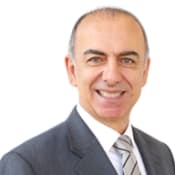
(1960 - )
Larnaca, Cyprus
Areas of Specialization: Biomedical Engineering
Kyriacos A. Athanasiou is the Henry Samueli Chair in Engineering and a Distinguished Professor at the University of California, Irvine and a bioengineer. He studied at Brescia College for a time after his military service. He went on to earn a bachelor’s degree in mechanical engineering from the New York Institute of Technology at Old Westbury. He earned an additional master’s degree, a Ph.M. and Ph.D. from Columbia University.
After graduating from college with his Ph.D., he became an assistant professor at the University of Texas at San Antonio before becoming a full professor at Rice University, where he established a bioengineering research group focusing on cartilages within the human musculoskeletal system. Their work on cartilage defects in vivo has helped scientists understand how cartilage cells behave and why cartilage healing is so difficult. He has published hundreds of articles on biomedical research regarding cartilage and tissue engineering approaches.
He has co-founded fifteen different companies, including Osteobiologics and Vidacare, which have since been acquired by other firms. He has served as the President of the Biomedical Engineering Society and Editor-in-Chief of the Annals of Biomedical Engineering. He is a fellow of the National Academy of Inventors, the American Association for the Advancement of Science, the American Society for Mechanical Engineers and the Biomedical Engineering Society.
20.Shuji Nakamura

(1954 - )
Ikata, Ehime, Japan
Areas of Specialization: Electronics Engineering, LEDs
Shuji Nakamura currently holds the title of Professor at the Materials Department of the College of Engineering, University of California, Santa Barbara. Nakamura completed his bachelor’s in electronic engineering at University of Tokushima in 1977, and his master’s in 1979, after which Nakamura went immediately into engineering in private industry.
Nakamura is best known as the inventor of blue and white light-emitting diodes (LEDs). More than just bright, these LEDs are highly-efficient light sources, and the commercialization of this invention is allowing for consumers and corporations the world over to reduce their energy consumption. The road to this invention, however, was not easy. Much of Nakamura’s career through the 1980s was spent refining LEDs to make a blue LED that was both functional and marketable; it was not completed until 1993.
For his work, Nakamura has received numerous awards and honors, including a Nobel Prize in Physics for his role in inventing blue-light LEDs, a Global Energy Prize, a Benjamin Franklin Medal in Physics, a Harvey Prize, and a Mountbatten Medal.
21.Albert P. Pisano
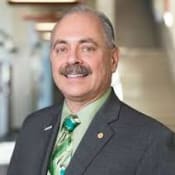
(1954 - )
Areas of Specialization: Mechanical Engineering, Microelectromechanical Systems
Albert P. Pisano is the Dean of the Jacobs School of Engineering for the University of California, San Diego. He earned a B.S. in mechanical engineering from the School of Engineering and Applied Science at Columbia University, where he also earned an M.S., M.Phil. and Ph.D.
His research interests include microthermal heat management devices for use in minute integrated circuits, microfluidic systems for nano manufacturing, nanolattice metamaterials, nanoimprinted sensors and the optimization of microelectromechanical systems. He was a professor at the University of California, Berkeley’s College of Engineering for two decades and was also a project manager in the study of microelectromechanical for the Defense Advanced Research Projects Agency.
As Dean, Pisano has promoted diversity at the school, with a 40% female hiring rate. He has made thoughtful and concerted efforts to maintain diversity throughout his department and has pushed for funding to support diversity-focused groups on campus, such as the Black Engineering and Science Students Association. His strategic plan for the school has resulted in strong growth and a new vision for the priorities of the school.
He became a member of the National Academy of Engineering in 2001 and became a fellow of the American Society of Mechanical Engineers three years later.
22.G. Wayne Clough

(1941 - )
Douglas, Georgia, USA
Areas of Specialization: Civil Engineering, Geotechnical and Earthquake Engineering
Gerald Wayne Clough is President Emeritus for the Georgia Tech and co-founder of the United States Universities Council of Geotechnical Engineering Research. He earned bachelor’s and master’s degrees in civil engineering from Georgia Tech, and a Ph.D. in civil engineering at the University of California, Berkeley.
During his fourteen-year tenure as President of Georgia Tech, he worked to broaden research capability and funding across campus. Under his leadership, more than a billion dollars was spent on huge construction projects across campus. He led programs to make the school more accessible for low-income applicants and to enrich research and recruitment programs.
He left Georgia Tech to become Secretary of the Smithsonian Institution, where he remained until 2014. He has also served on President George W. Bush’s Council of Science and Technology, and as a member of the National Science Board. He was inducted into the Technology Hall of Fame of Georgia in 2009, and is an honorary member of the ANAK Society.
Georgia Tech dedicated their Undergraduate Learning Commons building to him, naming it the G. Wayne Clough Undergraduate Learning Commons, in recognition for his work on behalf of undergraduate students. Most recently, he became a National Honor Member of Chi Epsilon, a civil engineering honor society.
23.John Rogers

(1967 - )
Rolla, Missouri, USA
Areas of Specialization: Materials Science, Bioengineering
John Rogers is the Louis Simpson and Kimberly Querrey Professor Materials Science and Engineering, Biomedical Engineering, and Neurological Surgery for Northwestern University. He earned a B.A in chemistry and a B.S. in physics from the University of Texas at Austin, and an S.M. in physics, an S.M. in chemistry, and a Ph.D in physical chemistry from the Massachusetts Institute of Technology. Rogers has researched how best to leverage the innate characteristics of liquid crystals, polymers, and biological tissues in forms like ribbons or tubes.
He has published nearly 500 papers and been awarded over 50 current and 30 pending patents for innovations developed in his work with nano and molecular scale fabrication for photonic applications. His work has been recognized with a MacArthur Fellowship, a Lemelson-MIT Prize, a Smithsonian Award for American Ingenuity in the Physical Science, and an A.C. Eringen Medal from the Society of Engineering Science.
He is a fellow of the American Physical Society, the Materials Research Society, the American Association for the Advancement of Science, the Institute of Electrical and Electronics Engineers, and the National Academy of Inventors.
His current research is largely focused on bio-integrated technologies or those inspired by other biological entities, and innovations in the soft materials available for conduction of signals, conformal electronics, and microfluidic functionalities.
24.Arthur Gossard
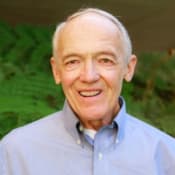
(1935 - )
USA
Areas of Specialization: Electronic and Photonic Materials
Arthur Gossard holds the titles of Professor Emeritus and Research Professor in Materials and Electrical & Computer Engineering at the University of California, Santa Barbara. Gossard earned his B.A. at Harvard University, and his Ph.D. at the University of California, Berkeley.
Gossard did his most influential work at Bell Laboratories. His work is most focused in molecular beam epitaxy, which relates to the growth of artificially structured materials. Essentially, this method is used to to “grow” thin-film crystal layers for the fabrication of semiconductor devices (the “guts” of all modern technologies). In particular, Gossard’s research has been fundamental in developing the methods used for developing nanotechnology. Additionally, he is co-discoverer of the Quantum Confined Stark Effect and the Fractal Quantum Hall Effect.
For his work, Gossard has received awards and honors including the National Medal of Technology and Innovation, the AAAA Newcomb Cleveland Prize, fellowship with the Electron Devices Society, and induction into the National Academy of Engineering, as well as the National Academy of Sciences.
25.John Dabiri
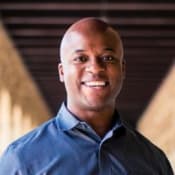
(1935 - )
USA
Areas of Specialization: Bioengineering, Fluid Mechanics, Theorectical Engineering
John Dabiri currently holds the title of Centennial Chair Professor at the California Institute of Technology. He is also director of the Biological Propulsion Laboratory, and holds positions on the editorial boards of Journal of Fluid Mechanics and the Journal of the Royal Society Interface. Dabiri earned his bachelor of science in mechanical and aerospace engineering in 2001 at Princeton University, and his MS in aeronautics in 2003 and Ph.D. in bioengineering in 2005 at the California Institute of Technology.
Dabiri is an aeroscience and bioengineer, best known for his work in fluid mechanics, flow physics, and theoretical engineering. In particular, Dabiri is known for his groundbreaking work that draws on biology to better understand fluid dynamics. Analyzing the movement of jellyfish and schooling fish, Dabiri has produced research with profound implications for the efficient design and repair of things ranging from wind turbines to the muscles of the human heart. His designs have also been used in underwater naval craft. Lately, his work has focused on biological reverse engineering, with the goal of “building” living and functioning jellyfish from lab-synthesized tissues.
For his work, Dabiri has received numerous awards and honors, including a MacArthur Fellowship, an Office of Naval Research Young Investigator Award, a Presidential Early Career Award for Scientists and Engineers, fellowship with the American Physical Society, and the Eugene L. Grant Award for Excellence in Teaching.
Honorable Mentions in Engineering
- Rose Amal, University of New South Wales
- Cecil Balmond, University of Pennsylvania
- Alan Bovik, University of Texas at Austin
- George M. Church, Harvard University
- Alan Finkel, Australia’s Chief Scientist
- Eric Fossum, Dartmouth College
- Yuan-Cheng Fung, University of California at San Diego
- Lynn Gladden, University of Cambridge
- Peter Mitchell Grant, University of Edinburgh
- Klaus Lackner, Arizona State University
- Robert Metcalfe, University of Texas at Austin
- Robert M. Nerem, Georgia Institute of Technology
- Nicholas Peppas, University of Texas
- Bradford Parkinson, Stanford University
- Nobukazu Teranishi, University of Hyogo
- Feniosky Peña-Mora, Columbia University
- Matthew Tirrell, University of Chicago
- John G. Webster, University of Wisconsin-Madison